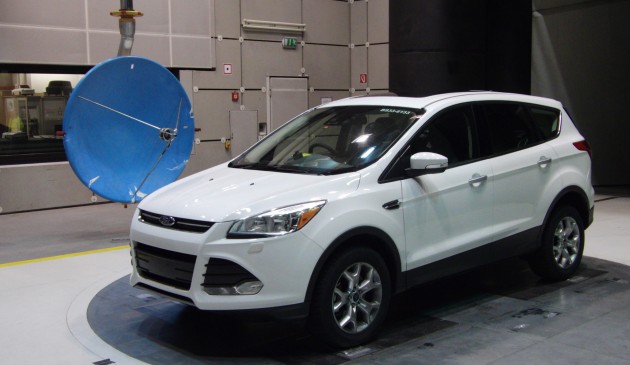More than 110 years ago, Henry Ford knew even then the importance of being a standout among the crowd, delivering high-quality products that people wanted and valued. The Model T, which paved the way forward for the company, may have been a car for the masses, but it was to be, in the founder’s words, “constructed of the best materials, by the best men to be hired, after the simplest designs that modern engineering can devise.”
Quality was one of the things that Ford knew would define the difference, and it has been a long-held cornerstone of Ford’s business strategy. In 1949, Henry Ford II, introduced the company’s new Quality and Demand Go Hand in Hand campaign, extolling the company’s commitment to build quality into Ford products from the very first step of production. “Quality will determine whether we lead the field or are also-rans in the tough competition,” as he put it.
In 1981, the Blue Oval launched its iconic Quality is Job One advertising campaign, further reinforcing Ford’s dedication to improving the quality of its products to customers. Both campaign and slogan ran for nearly 10 years, becoming one of the most recognised automobile advertising slogans in the United States at the time.
That commitment to quality continues to this day – it’s a significant aspect of the company’s One Ford transformation utilising global platforms for all Ford vehicle design and processes, standardising quality control, boosting productivity and driving continuous improvement worldwide.
Much of this is led by technology, where the brand is an industry leader in robotic testing and inspection. In 2011, Ford made a US$100 million investment to improve customer satisfaction, including the introduction of laser robots in its inspection plants to improve vehicle quality and precision, attaining better-fitting parts, reducing wind noise and detecting air leakage.
In 2013, it developed robotic technology used to operate vehicles during high-impact on-road and off-road testing, ensuring vehicles meet the company’s exacting durability standards.
Other innovations include an industry-first dirt-detection technology. Launched in three Ford assembly plants this year, the brand’s dirt-detection technology uses high-resolution cameras to generate a 3D model, helping technicians identify and eliminate dirt particles on vehicle paint surfaces, improving paint quality and surface finish for customers around the world.
Also an industry-first is the use of 3D mapping, in which the mapping technology is utilised to analyse more accurately the rear axle parts of Ford trucks during assembly, comparing against a computer model to ensure more precise construction, working towards a smoother, quieter ride. Elsewhere, a barrage of evaluative tests are carried out in a bid to minimise road noise while perfecting interior acoustics.
Quality doesn’t just mean deploying the tech at the development and production stage – drivers get
outstanding driver-focused handling systems across the line-up, including Electronic Stability Programme, Hill Start Assist, rear parking sensors with park pilot and Torque Vectoring Control, among others.
And interior cues also highlight the approach towards quality, with refined detailing and stylish touches to convey a premium look-and-feel throughout the cabin, including ergonomically designed instrument panel, surfaces and knobs. Tech such as Ford’s exclusive SYNC technology, Smart Keyless Entry with Ford Power Start amplify that approach further.
As Henry Ford said of his company in 1938, “We have had just one main purpose… to give the people transportation of the most dependable quality at the lowest possible cost.” Quality has been a component in every Ford vehicle since the company’s inception, since Ford put in motion his dream to build a car for the great multitude.








